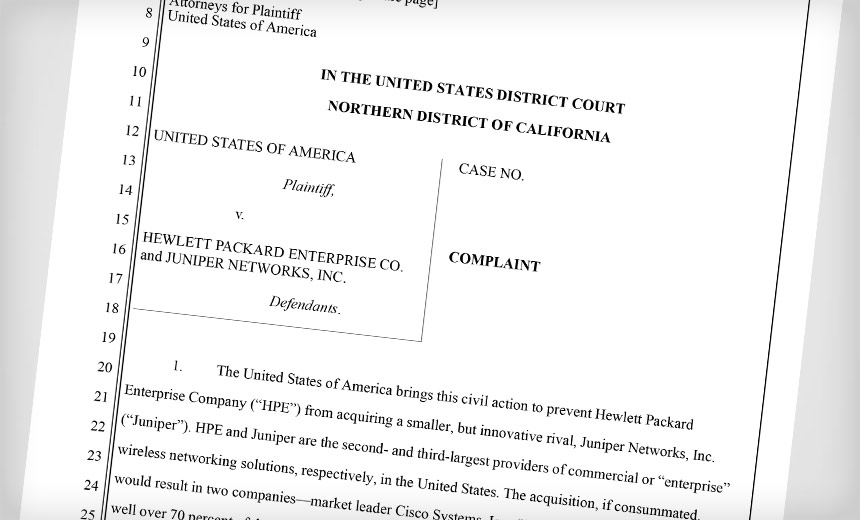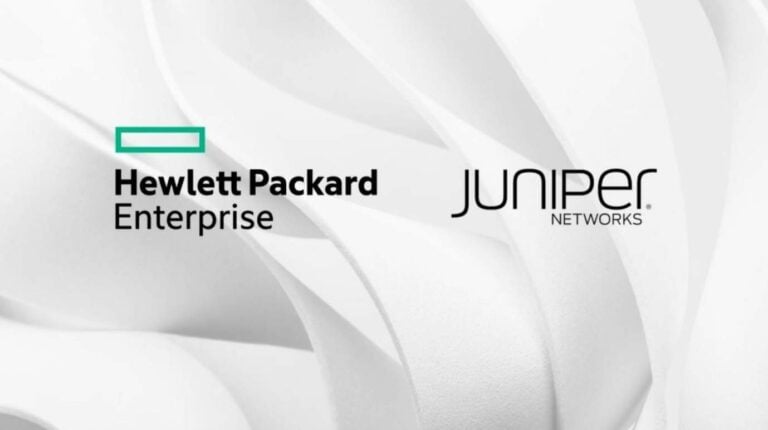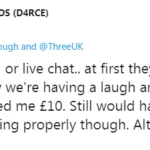Unpacking the HPE Juniper Acquisition Settlement Details: What You Need to Know About the Regulatory Hurdles and Market Impact
Estimated reading time: 9 minutes
Key Takeaways
- The acquisition of Juniper Networks by Hewlett Packard Enterprise (HPE) is an all-cash deal valued at approximately $14 billion, reflecting a significant premium for shareholders.
- This strategic move aims to accelerate HPE’s leadership in AI-driven innovation and cloud-driven solutions within the networking sector.
- The deal faced intense scrutiny from the U.S. Department of Justice (DOJ) due to antitrust concerns regarding market competition.
- A crucial element of the HPE Juniper acquisition settlement details involves HPE’s agreement to divest its “Instant On” wireless business to satisfy regulatory demands.
- The settlement paves the way for Juniper Networks acquisition regulatory approval, with the merger expected to close by late 2024 or early 2025, promising a significant reshaping of the networking landscape.
Table of Contents
- Unpacking the HPE Juniper Acquisition Settlement Details: What You Need to Know About the Regulatory Hurdles and Market Impact
- Key Takeaways
- Introduction: A New Era in Networking
- Strategic Intent Behind the Merger: Why Juniper for HPE?
- Regulatory Hurdles and the DOJ’s Involvement: Navigating Antitrust Scrutiny
- Unpacking the HPE Juniper Acquisition Settlement Details: The Path to Approval
- The HPE Instant On Wireless Business Divestiture: A Key Concession
- Achieving Juniper Networks Acquisition Regulatory Approval: The Global Picture
- The Broader Impact of HPE Juniper Merger on Networking Market: Reshaping the Future
- Conclusion: A Transformative Alliance
- Frequently Asked Questions (FAQ)
Introduction: A New Era in Networking
The technology world recently witnessed a seismic announcement: Hewlett Packard Enterprise (HPE) declared its intent to acquire Juniper Networks. This isn’t just another corporate maneuver; it’s a strategic play designed to significantly reshape the networking industry, particularly as the landscape rapidly evolves with the demands of AI-driven innovation and cloud-driven strategies. This landmark all-cash transaction is valued at approximately $14 billion, with Juniper shareholders set to receive $40.00 per share. This figure represents a robust premium of over 32% compared to Juniper’s unaffected stock price before the announcement, signaling HPE’s strong commitment to this acquisition (Source: HPE Press Release, SEC Filing, Financier Worldwide).

Why is this deal so significant? Because it positions HPE to accelerate its strategic goals in an era where AI and pervasive cloud computing are no longer just buzzwords but fundamental pillars of enterprise infrastructure. This blog post aims to dive deep into the very core of the HPE Juniper acquisition settlement details, especially in light of the antitrust scrutiny that has accompanied it. We’ll explore how this agreement ensures the merger progresses while safeguarding competitive market dynamics. Key terms you’ll encounter include HPE Juniper acquisition settlement details, Juniper Networks, and Hewlett Packard Enterprise, each integral to understanding this pivotal moment in tech.
Strategic Intent Behind the Merger: Why Juniper for HPE?
HPE‘s strategic rationale for acquiring Juniper Networks is clear: to rapidly expand its total addressable market (TAM) and significantly bolster its capabilities in AI-driven networking solutions. Imagine a world where network infrastructure isn’t just reactive but intelligently anticipatory, powered by advanced AI. This is the vision HPE is pursuing. By integrating Juniper’s robust portfolio – which includes cutting-edge data center networking solutions, enterprise-grade firewalls, high-performance routers, and advanced automation platforms like Mist AI for AI-native networking – HPE aims to elevate its competitive stance against industry giants such as Cisco. This combined strength will provide a more comprehensive, end-to-end solution for modern enterprises (Source: HPE Press Release, Channel Futures).

The expected outcomes of this formidable alliance are manifold. It’s poised to drive unprecedented innovation for enterprise, service provider, and cloud customers alike. Furthermore, this move is anticipated to substantially boost HPE’s presence in high-growth sectors. Think about the explosive demand for advanced security solutions and the transformative potential of AI-native networking architectures. By bringing Juniper’s strengths into its fold, HPE aims to deliver solutions that are not just faster and more reliable, but also more intelligent and secure from the ground up (Source: Financier Worldwide). This synergy is designed to unlock new opportunities and redefine what’s possible in the networking sphere.
Regulatory Hurdles and the DOJ’s Involvement: Navigating Antitrust Scrutiny
Given the sheer scale of the proposed acquisition and its potential to significantly alter the competitive landscape, it was inevitable that the deal would attract intense scrutiny from regulatory authorities worldwide. This is standard practice for mergers of this magnitude, especially when they involve key players in critical technology sectors. The spotlight, in this case, shone brightly on the U.S. Department of Justice (DOJ). The DOJ raised substantial antitrust concerns, particularly focusing on the potential for a lessening of competition within the networking hardware and software markets if HPE and Juniper Networks combined without any restrictions.

The core of the regulatory review revolved around a critical question: Would this acquisition grant the combined entity excessive market control? And if so, would that hinder crucial competition and innovation, especially in burgeoning areas like enterprise wireless solutions? The fear was that reduced competition could lead to higher prices, fewer choices, and slower innovation for businesses reliant on these networking technologies. The DOJ’s meticulous examination sought to ensure that the acquisition would not create a dominant player that could stifle growth or disadvantage consumers (Source: Juniper Networks Newsroom). This careful oversight is a testament to the importance of maintaining a vibrant, competitive market for technological advancements.
Unpacking the HPE Juniper Acquisition Settlement Details: The Path to Approval
To directly address the DOJ’s significant antitrust concerns and pave the way for securing the necessary approvals, HPE and Juniper Networks engaged in extensive negotiations that ultimately led to a pivotal settlement with the Department of Justice. While the specific, granular documentation of this settlement is not publicly disclosed in its entirety – a common practice in such sensitive corporate agreements – the press releases from both companies have confirmed that the agreement includes a series of targeted concessions. These concessions were not arbitrary; they were meticulously designed to “preserve the intended benefits of this deal” for both companies and their customers, while simultaneously ensuring robust, ongoing market competition (Source: Juniper Networks Newsroom).

So, what do these general types of requirements typically entail in such a settlement? They often include mandates for maintaining open access to critical technologies or specific business lines. In some cases, they might involve structural remedies, such as the divestiture of certain assets or business units. The aim is always to prevent any single entity from gaining undue market dominance that could harm innovation or consumer choice. The HPE Juniper acquisition settlement details reflect a careful balance, allowing the strategic merger to proceed while upholding the fundamental principles of fair market competition. This pragmatic approach underscores the complexity of large-scale corporate mergers in highly competitive sectors.
The HPE Instant On Wireless Business Divestiture: A Key Concession
A central, indeed crucial, component of the HPE Juniper acquisition settlement details was HPE’s explicit agreement to divest its “Instant On” wireless business. This particular line of business refers to HPE’s portfolio of wireless networking solutions that are specifically designed and marketed for small and medium-sized businesses (SMBs). Think of it as a plug-and-play solution for offices, retail stores, and other smaller enterprises seeking reliable, easy-to-manage Wi-Fi infrastructure. This wasn’t a minor point; it was a deal-maker.
The divestiture was not a voluntary move but a mandated requirement by the DOJ. The reason? To precisely prevent market overlap and potential monopolistic control between HPE’s existing wireless networking solutions and those offered by Juniper. Juniper also has its own strong presence in wireless, particularly with its AI-driven Mist Wi-Fi offerings, which serve a broader range of enterprise customers. Without this divestiture, the combined HPE-Juniper entity could have significantly diminished competition, potentially leading to fewer choices and higher prices for small and medium-sized business customers in the wireless networking segment (Source: Juniper Networks Newsroom). By spinning off the Instant On business, HPE ensures that customers in this vital segment continue to have access to competitive alternative enterprise wireless solutions, thereby satisfying the DOJ’s core concerns about consumer choice and fair pricing. This strategic concession highlights the power of regulatory bodies in shaping market outcomes for the benefit of consumers and businesses.

Achieving Juniper Networks Acquisition Regulatory Approval: The Global Picture
The settlement reached with the U.S. Department of Justice was, without a doubt, a pivotal and indispensable step in clearing the complex pathway for the acquisition’s completion. It addressed the most significant domestic hurdle. However, achieving full Juniper Networks acquisition regulatory approval is not a singular event confined to one nation. It also depends critically on satisfying various international regulators across multiple jurisdictions and, of course, securing the overwhelming approval of Juniper’s shareholders. Large, cross-border mergers like this one typically require consent from regulatory bodies in key markets where both companies operate, such as the European Union, the UK, China, and others (Source: HPE Press Release, Financier Worldwide).

The negotiated terms, particularly the business divestiture extensively discussed as part of the HPE Juniper acquisition settlement details, played a crucial role in facilitating this broader global approval process. By proactively addressing the primary competitive concerns identified by the DOJ, HPE and Juniper were able to streamline the process of securing necessary regulatory approvals in other jurisdictions. This is because a robust settlement in one major market often provides a template or a clear signal to other regulators that competitive issues have been adequately addressed (Source: Juniper Networks Newsroom). With the US settlement now firmly in place, HPE and Juniper confidently anticipate closing the transaction by late 2024 or early 2025, contingent upon receiving these final remaining approvals and fulfilling customary closing conditions. This marks a significant milestone on their journey to unification.
The Broader Impact of HPE Juniper Merger on Networking Market: Reshaping the Future
The integration of HPE and Juniper Networks is poised to fundamentally reshape the networking landscape. This isn’t merely an expansion; it’s a strategic repositioning that promises to ignite a new wave of innovation and competition within the industry. HPE, with Juniper under its wing, will significantly extend its reach across new and existing markets, offering a far more comprehensive and integrated suite of networking, security, and especially AI-driven solutions (Source: HPE Press Release, Channel Futures). This consolidation means customers will likely see more unified platforms, simpler management, and greater synergy between their infrastructure components. Imagine managing your entire data center, enterprise network, and security fabric from a single pane of glass, all augmented by powerful AI capabilities.

Moreover, the competition with top-tier vendors like Cisco, which currently dominates much of the enterprise networking space, is set to intensify considerably. This increased rivalry is a positive development for the entire networking market, as it will invariably drive greater innovation, more aggressive pricing, and improved customer offerings across the board. The strategic HPE Instant On wireless business divestiture, while a concession, ensures that competitive diversity is preserved, particularly within the small and medium-sized business sector. This prevents any single entity from holding monopolistic control over critical segments of the wireless networking market, ensuring continued choice and fair access for enterprises of all sizes.
Ultimately, customers and partners can anticipate streamlined, AI-enhanced networking services that are more resilient, autonomous, and secure. This move has the potential to set new benchmarks for scale, automation, and intelligence across the entire industry, pushing every player to innovate faster. The impact of HPE Juniper merger on networking market will be felt for years to come, influencing product roadmaps, competitive strategies, and customer expectations.
Conclusion: A Transformative Alliance
The acquisition of Juniper Networks by HPE unequivocally marks a transformative moment for the enterprise networking industry. This isn’t merely a merger of two companies; it’s the convergence of complementary strengths designed to create a powerhouse in an increasingly AI-driven and cloud-centric world.
The comprehensive regulatory HPE Juniper acquisition settlement details—particularly the strategic divestiture of HPE’s Instant On wireless business—were absolutely crucial. These measures were painstakingly negotiated to effectively address pressing antitrust concerns and, by doing so, meticulously pave the way for final regulatory approval (Source: Juniper Networks Newsroom). This careful balancing act ensures that the benefits of the merger can be realized while maintaining a healthy, competitive market.
As both companies diligently move toward the anticipated closing of this monumental deal, the outlook for the future is remarkably promising. This strategic alliance is poised to significantly elevate competition within the networking sector, vigorously spur innovation across the board, and ultimately offer expanded, more sophisticated choices for customers navigating the complexities of modern IT infrastructure. The impact of HPE Juniper merger on networking market signals a dynamic new chapter for both HPE and Juniper, with far-reaching implications for the global networking market (Source: Juniper Networks Newsroom, HPE Press Release, Channel Futures).

Frequently Asked Questions (FAQ)
- What is the value of the HPE acquisition of Juniper Networks?
The acquisition is an all-cash transaction valued at approximately $14 billion, with Juniper shareholders receiving $40.00 per share.
- Why did the DOJ scrutinize the HPE Juniper acquisition?
The U.S. Department of Justice (DOJ) raised antitrust concerns due to the potential for reduced competition in the networking hardware and software markets, particularly regarding enterprise wireless solutions, if the two companies combined without restrictions.
- What are the key HPE Juniper acquisition settlement details?
A crucial part of the settlement with the DOJ involves HPE’s agreement to divest its “Instant On” wireless business. This concession was designed to address antitrust concerns and ensure ongoing market competition in the SMB wireless segment.
- When is the HPE Juniper acquisition expected to close?
With the DOJ settlement in place, HPE and Juniper anticipate closing the transaction by late 2024 or early 2025, pending final international regulatory approvals and customary closing conditions.
- How will this merger impact the broader networking market?
The merger is expected to significantly reshape the networking landscape by expanding HPE’s market reach, intensifying competition with other industry leaders like Cisco, and driving innovation in AI-driven and cloud-native networking solutions for customers and partners.






